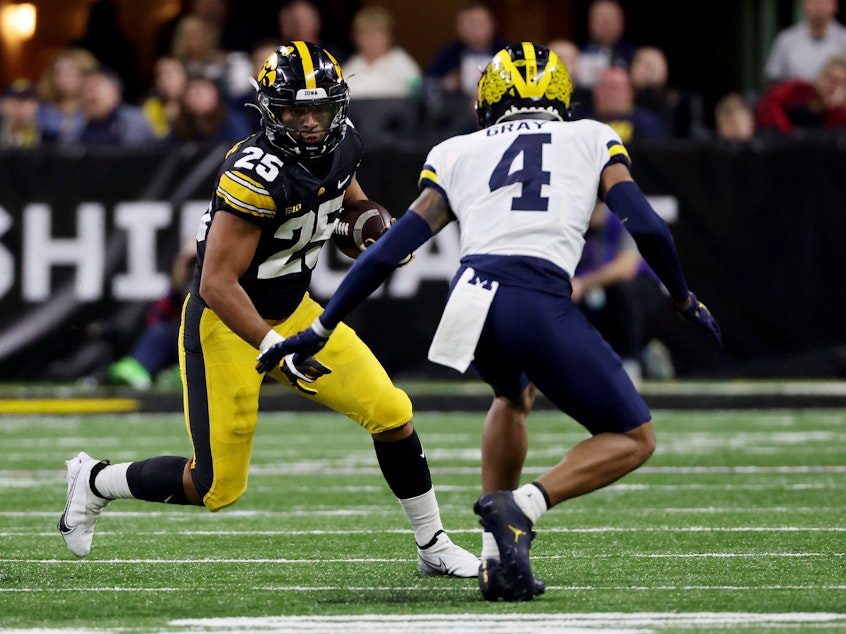College football is back and players still aren't getting paid

The Big Ten is set to make a lot of money. The college athletics conference recently signed an exclusive broadcast deal with FOX, CBS, NBC, and NBCUniversal's Peacock streaming service. Reports have the deal set to bring in over $7 billion across seven years. But none of that money will be going directly to the athletes, again reviving the debate over whether student-athletes should get paid.
According to the Big Ten's press release, the broadcast deal along with the addition of the University of California, Los Angeles and the University of Southern California into its ranks will provide the conference with "the broadest audience in the country, coast-to-coast."
"They're not even pretending anymore. It's about money," said Jason Stahl, head of the College Football Players Association.
The CFBPA is not a union, but an advocacy and organizing group that has argued for elite college football players to receive a share of the revenue earned through college football games. Stahl said that at one point, the Big Ten would've at least paid lip service to the idea that their decisions are in the best interests of their athletes' academic careers. But now, Stahl sees that pretense as gone.
"Because the idea that a college athlete getting on a cross-continental flight to play a game is somehow in service of an academic agenda is obviously absurd," he said.
Sponsored
Earlier this summer, at a training camp press conference, a reporter asked Ohio State quarterback C.J. Stroud if players should be getting a cut of the Big Ten broadcast deal.
"I'll probably have to think about that a little more, but just off rip, I'll say yes," he said.
Stroud said he was grateful for the opportunity he's been given and appreciates that his tuition has been covered. "Me personally, my mom has always taught me to know my worth," he said.
There's been one recent change that's allowed college athletes access to a source of income. About a year ago, after a Supreme Court ruling, the NCAA changed its rules and now allows student-athletes to monetize their name, image, and likeness. Meaning they are now allowed to sign endorsement deals and do commercials.
"It definitely provides kids with the chance to come across some money that they may not see in their lifetime if they don't make it to professional football," said Jordan Meachum.
Sponsored
Meachum is on the leadership committee of the CFBPA. He's also a former college football player, mostly playing at Sacred Heart University before finishing his career at South Dakota State University.
But money earned through NIL deals isn't available to the majority of players, nor is it coming directly from the team, school, or conference system. Meachum said that had he gotten paid, it would've meant not having to stress out about the regular expenses of food, rent, and books, and instead "put more focus into academics and football, and so on."
Victoria Jackson is a sports historian at Arizona State University who said historically, we as a culture understood the athletic scholarship as a fair trade for athletes' efforts. But now?
"These athletes play for schools that are bringing in hundreds of millions of dollars. Conferences that are bringing in, now, billions of dollars. And an NCAA system in total that's bringing in close to $20 billion annually," she said.
Football and basketball take up a lot of the conversation around college sports because they bring in the money. Money that's used to subsidize other sports. Which introduces a racial dynamic to this, said Jackson, considering the top tier players in NCAA football and basketball are majority Black. "And the athletes who are being subsidized are often the privileged kids who play water polo or rowing or tennis or golf," and who are less likely to be in need of a scholarship to go to college. [Copyright 2022 NPR]



